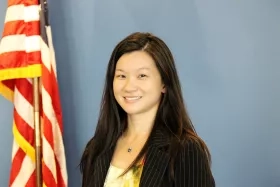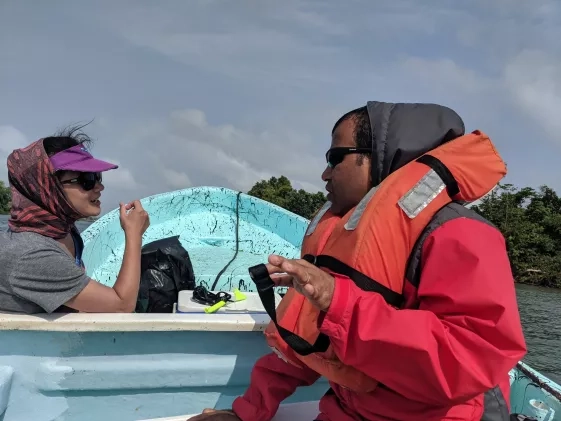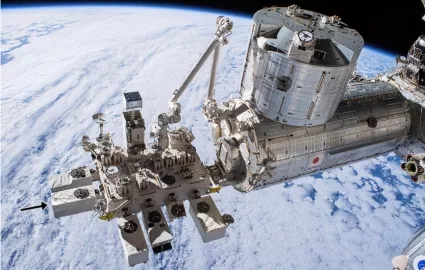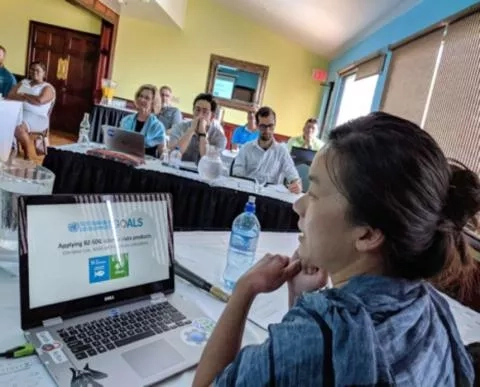Vital equipment was stuck with Bangladesh customs and the Christine Lee's research team was running out of time to set up their study on how arsenic was affecting local crops and groundwater.
Things weren’t going according to plan and Lee began to feel overwhelmed.
In the village her team was working out of, she stepped away and to have a good cry. It wasn’t long until she was surrounded by children asking her what was wrong and if she was sad because she missed her family.
“They snapped me out of it,” Lee said. “I’m freaking out over a battery stuck in customs and they’re way more connected with things that are actually important. I knew we would figure something out.”
And they did. In the end, her UCLA-MIT student team got their chemical sensors set up in the Bangladesh rice paddy.
For Lee, it was a lightbulb moment.
“It’s moments like that, when you’re in a different environment and out of your element, when you can have a moment of clarity, and try to adapt,” she said.
That was 2007 and Lee hasn’t slowed down since.
Fast-forward to 2020, and Lee has an impressive body of work under her belt. Lee is a scientist at NASA’s Jet Propulsion Laboratory (JPL), a division of Caltech University in Pasadena, California. She was the recipient of the JPL Voyager Award and the NASA Early Career Public Achievement Medal, which is awarded for significant performance during the first 10 years of an individual's early career in support of NASA.
Lee supports the Earth Applied Sciences Water Resources program area as an associate program manager. At JPL she works in their Terrestrial Hydrology Group, and is an applications co-lead for Surface Biology and Geology mission study team. She is also the applications lead for NASA's ECOsystem Spaceborne Thermal Radiometer Experiment on the Space Station mission, also known as ECOSTRESS.
“I love ECOSTRESS,” she said. “As an instrument on the International Space Station, it leverages the unique Space Station orbit to study how plants use water throughout the day, something that has not been done before at these scales.”
By accurately measuring the temperature of plants, the ECOSTRESS mission aims to find answers about how the Earth is responding to changing water availability and water stress over time and how to best monitor agricultural vulnerability and drought onset. ECOSTRESS collects data at various times of day, allowing for a greater understanding of how plants are changing throughout the day.
“We’ve seen some really cool patterns in how crops use water because we’re able to sample at different times of day,” Lee said.
With a life-long interest in water quality, Lee’s relationship with water has expanded as she’s gone from the field to the lab. In her current roles, Lee looks at a combination of in field and remote sensing data to better understand water quality trends over time using long-term data sets and to support water resource managers.Lee also provides mentorship to graduate students in the JPL internship program. This summer, JPL opened additional opportunities to collaborate with students from historically black colleges and universities, also known as HBCUs.
“I’ve really appreciated the opportunity to be a part of their journey as scientists and researchers,” she said.
When she’s not working on one of her many projects or mentoring students, it’s full-on family time. Lee has two young children and a 13-year-old American bulldog named Logan. Whether they’re listening to pop music on repeat — anything is better than Baby Shark — or camping beachside, Lee can be found exploring California’s natural wonders with her family in tow.
Lee often shares lessons she’s learned from her own career with the JPL interns she mentors. Her biggest piece of advice is to develop trusting, communicative relationships with mentors and colleagues.
“I was always worried about not being good enough,” she said. “And that kept me from speaking up more. I want to make sure those I collaborate with don’t have the same thoughts holding them back. Having a good network of peers and mentors helped empower me.”







